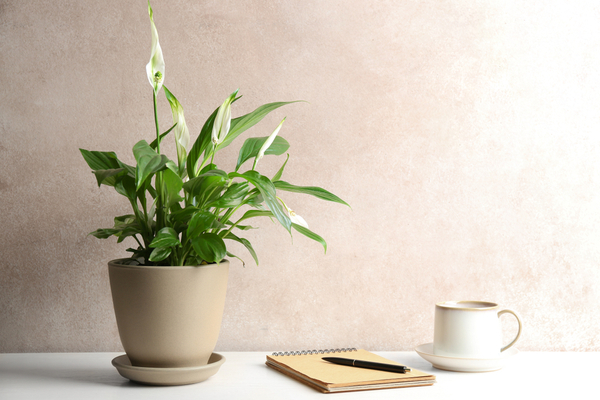Working from home? Cultivating greenery around your desk can lower anxiety, boost air quality and create calm.
by Anna Blewett
The scramble to find desk space, the correct cables and appropriate amounts of bandwidth has occupied most of us over the past few weeks, but there’s one operational essential for your new home office you may have overlooked: plants.
According to Japanese research published at the start of this year, even a small desk plant can significantly reduce work stress, with anxiety levels and heart rate lowered from interaction with plants, whether that’s active tending or simply gazing at them.
This comes as no surprise to garden designer and plant addict Isabelle Palmer, whose new book Modern Container Gardening (£16, Hardie Grant) publishes in May.
‘Last time I moved house I took away all the plants from my living room and it just didn’t feel alive. It felt hollow, void of something. Plants give such a positive energy; they give a fullness to the room.’ For Isabella they inspire work, too. ‘There are studies that show green is a creative colour.’
Improving air quality
Plants also increase air quality by absorbing carbon dioxide and releasing oxygen and moisture, but some go a step further. It’s believed that the microbiome of every plant – the bacterial and fungal microorganisms that surround each specimen – actively pull pollutants from the air.
This process, known as ‘phytoremediation’, was famously tested by in 1989 by NASA scientists who concluded that maximising the air flow to root-soil areas maximised air filtration.
In 2018, scientists at the National Research Council of Italy concluded that plants ought to be integrated with existing air conditioning systems to make air quality measures more sustainable and cost effective.
Such moves may be some years off in public workspaces, but you can begin to green up your home work space right now.
Here are some great varieties to get started…
1) Boston Fern (Nephrolepis exaltata bostoniensis)
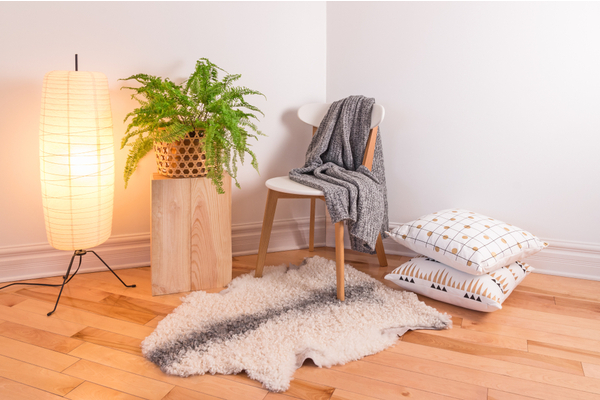 Damp-loving ferns may have a reputation for being high maintenance but in trials they score highest among plant classes at removing gaseous formaldehyde from the air. Regularly misting ferns is a great way to make sure you move from a sitting position at regular intervals. The cloud of fluffy green foliage will repay you by gently release moisture back into the room.
Damp-loving ferns may have a reputation for being high maintenance but in trials they score highest among plant classes at removing gaseous formaldehyde from the air. Regularly misting ferns is a great way to make sure you move from a sitting position at regular intervals. The cloud of fluffy green foliage will repay you by gently release moisture back into the room.
‘When I water my plants on the balcony or in containers I’m not thinking,’ says Isabelle. ‘It’s a real meditative space where I’m concentrating on a task and shutting off from my inbox or incoming calls.’
2) Peace Lily (spathiphyllum)
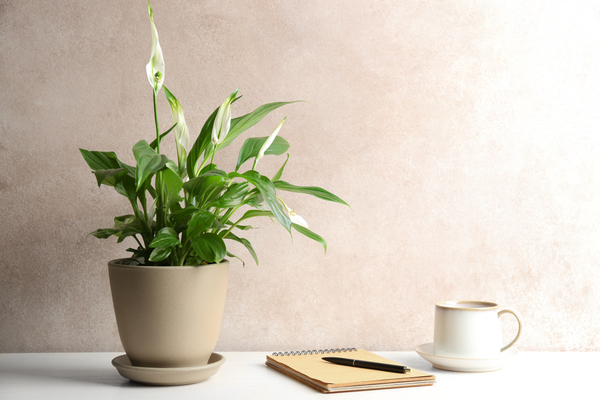 This most common of desk plants may be popular for its easy-to-grow and shade-tolerant nature, but it also has other benefits. Proven to remove mould spores from the air, peace lilies also hold the NASA stamp of approval for effectively filtering airborne VOCs such as formaldehyde, trichloroethylene and benzene from the air. Just make sure that children and pets steer clear as the foliage and flowers are toxic when eaten.
This most common of desk plants may be popular for its easy-to-grow and shade-tolerant nature, but it also has other benefits. Proven to remove mould spores from the air, peace lilies also hold the NASA stamp of approval for effectively filtering airborne VOCs such as formaldehyde, trichloroethylene and benzene from the air. Just make sure that children and pets steer clear as the foliage and flowers are toxic when eaten.
3) Lavender (lavandula)
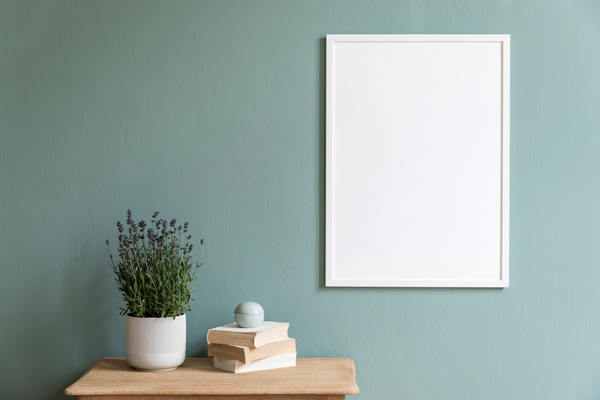 Not normally considered an indoor plant, lavender can nonetheless thrive on a desk that gets three to four hours of strong natural sunlight a day. It’s worth trying; lavender scored highly against other plants in a Korean study of remediation qualities. What’s more, linalool, a compound that contributes to lavender’s characteristic scent, has been proven by neuroscientists to trigger relaxation.
Not normally considered an indoor plant, lavender can nonetheless thrive on a desk that gets three to four hours of strong natural sunlight a day. It’s worth trying; lavender scored highly against other plants in a Korean study of remediation qualities. What’s more, linalool, a compound that contributes to lavender’s characteristic scent, has been proven by neuroscientists to trigger relaxation.
4) Fiddle Leaf Fig (ficus lyrata)
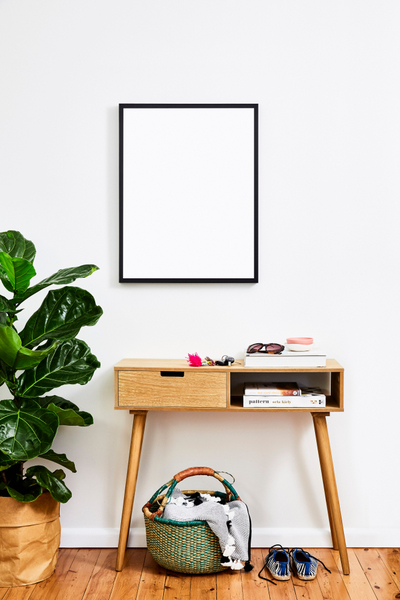 ‘If you want something big and bold try a fiddle leaf fig,’ advises Isabelle. ‘They’re really like small trees so they’ll give you a good sense of green. Put one in the corner and it’ll really green your space.’ The large leaves and the tree’s vertical spread give plenty of air-purifying potential right away, without taking up too much horizontal space.
‘If you want something big and bold try a fiddle leaf fig,’ advises Isabelle. ‘They’re really like small trees so they’ll give you a good sense of green. Put one in the corner and it’ll really green your space.’ The large leaves and the tree’s vertical spread give plenty of air-purifying potential right away, without taking up too much horizontal space.
5) Monkey Mask Plant (monstera adansonii)
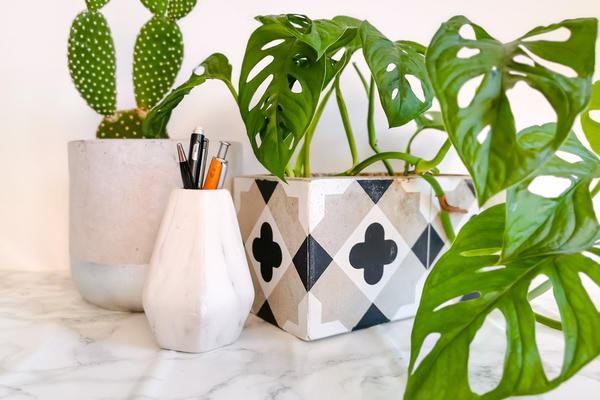 Taking regular screen breaks is essential for eye health, so intricate foliage casting complex shadows is a great option if you want your eye to rove away from the screen. ‘Try a Swiss cheese plant: there’s a monkey variety that is really beautiful and very easy to look after,’ says Isabelle. ‘It’s a great trailing plant that has very pretty cut out leaves.’ Anxiety, be gone!
Taking regular screen breaks is essential for eye health, so intricate foliage casting complex shadows is a great option if you want your eye to rove away from the screen. ‘Try a Swiss cheese plant: there’s a monkey variety that is really beautiful and very easy to look after,’ says Isabelle. ‘It’s a great trailing plant that has very pretty cut out leaves.’ Anxiety, be gone!

